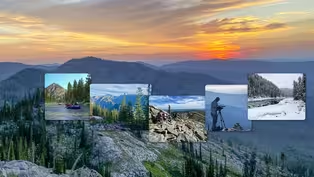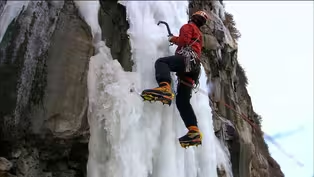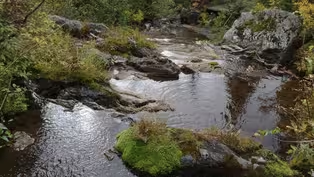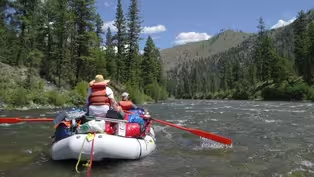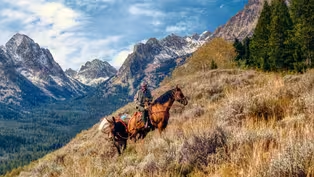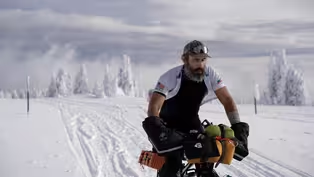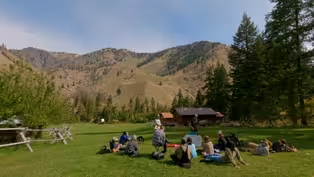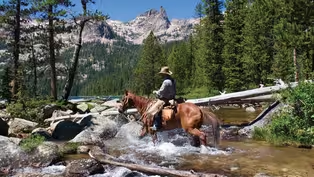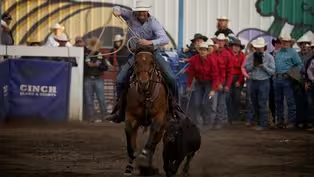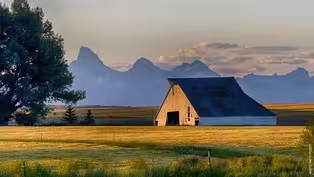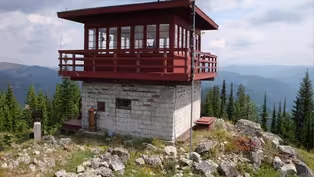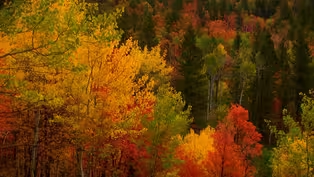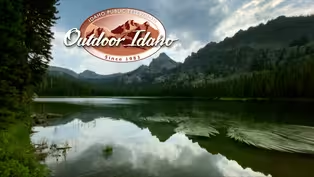
The Next Chapter
Season 39 Episode 4 | 58m 3sVideo has Closed Captions
“The Next Chapter” explores the ways in which Idaho is looking toward the future.
“The Next Chapter” looks to the future. We meet the new owners of an historic homestead along the Salmon River. We explore how the Forest Service, the Bureau of Land Management and the state’s Fish & Game Department are adapting to new challenges. We also hear from farmers trying out soil-friendly solutions, and learn how an outdoor recreation leader is dealing with a changing climate.
Problems playing video? | Closed Captioning Feedback
Problems playing video? | Closed Captioning Feedback
Outdoor Idaho is a local public television program presented by IdahoPTV
Major Funding by the Laura Moore Cunningham Foundation. Additional Funding by the Friends of Idaho Public Television and the Corporation for Public Broadcasting.

The Next Chapter
Season 39 Episode 4 | 58m 3sVideo has Closed Captions
“The Next Chapter” looks to the future. We meet the new owners of an historic homestead along the Salmon River. We explore how the Forest Service, the Bureau of Land Management and the state’s Fish & Game Department are adapting to new challenges. We also hear from farmers trying out soil-friendly solutions, and learn how an outdoor recreation leader is dealing with a changing climate.
Problems playing video? | Closed Captioning Feedback
How to Watch Outdoor Idaho
Outdoor Idaho is available to stream on pbs.org and the free PBS App, available on iPhone, Apple TV, Android TV, Android smartphones, Amazon Fire TV, Amazon Fire Tablet, Roku, Samsung Smart TV, and Vizio.
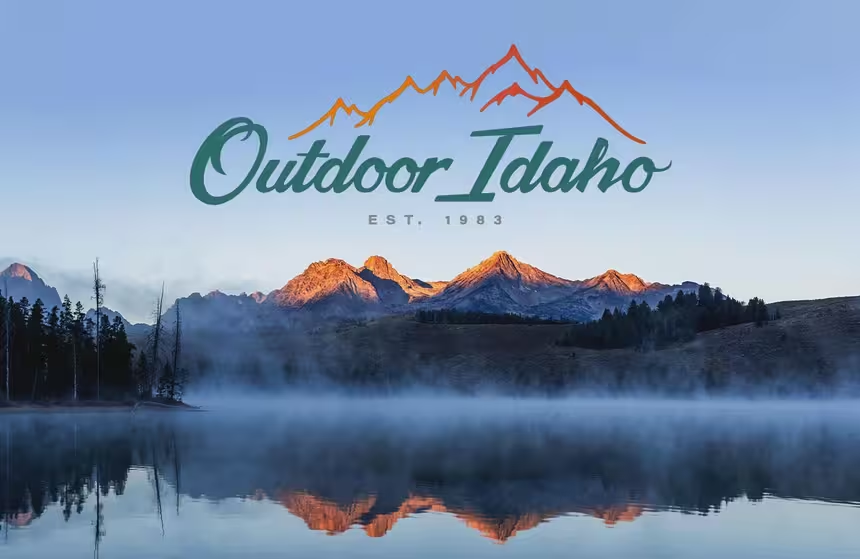
Outdoor Idaho on YouTube
Can't get enough Outdoor Idaho? Neither can we. Subscribe to the Outdoor Idaho YouTube channel for even more great content. You'll find full episodes, sneak peeks, behind-the-scenes footage, and exclusive content you won't find anywhere else. Subscribe today!Providing Support for PBS.org
Learn Moreabout PBS online sponsorshipMore from This Collection
Hourlong Specials
In the Shadow of the Bitterroots
Video has Closed Captions
“In the Shadow of the Bitterroots” will tell the stories of the Bitterroot Mountain range. (56m 46s)
Video has Closed Captions
We explore why Idaho is truly the Adventure state. (56m 50s)
Video has Closed Captions
Idaho's headwaters are truly some of the West's sacred places. (56m 47s)
My Excellent Adventure Special
Video has Closed Captions
Eight stories that will take you to some of Idaho’s best loved parts of the state. (56m 49s)
Video has Closed Captions
We examine how individuals have been touched by the Sawtooth Mountains. (56m 52s)
Joy Ride: Bicycling in Idaho Special
Video has Closed Captions
Idahoans are finding joy using bicycles to get from one beautiful place to another. (56m 46s)
Video has Closed Captions
From preschool to Ph.D., some Idahoans learn that they learn best in the outdoors. (56m 46s)
Video has Closed Captions
Outdoor Idaho takes a deep dive into the impact Idaho’s western white pine tree has had on society. (56m 46s)
Video has Closed Captions
We examine some of the changes in Idaho in the past 30 years. (56m 53s)
Video has Closed Captions
Outdoor Idaho brings you up close and personal to this exciting sport. (56m 46s)
Video has Closed Captions
Outdoor Idaho seeks out some of our state’s majestic agricultural icons. (56m 46s)
Eyes of the Forest: Idaho's Fire Lookouts Special
Video has Closed Captions
We examine the history and current uses of Forest Fire Lookouts throughout Idaho. (56m 47s)
Providing Support for PBS.org
Learn Moreabout PBS online sponsorshipREICHERT: Change, that inevitable constant, we see it all around us.
And those who accept it, who seek out change even when it's not exactly easy -- can often find success.
KODY YOUREE, FARMER: Oh, I'm not afraid to try a new methods.
You know, the guys that try at first, they might have a mess right on the road, but they're trying it.
And after a few years, it'll start to looking better and better and better.
REICHERT: Sometimes an acceptance of change can resonate throughout an entire workforce.
JIM CASWELL, FMR.
FOREST SERVICE: You just think about who's in leadership in this outfit, if you go back to 1965, almost every one of 'em was a white male, and that is no longer the case.
I kept thinking, gosh, I don't know if this is ever gonna work, but you can see the results today vividly.
REICHERT: Even an organization with a decided hook and bullet mindset can come to see things differently, thanks to technology that brings a new perspective.
MICHELLE KEMNER, IDFG: The camera stuff is going to be a game changer because we'll be able to make the right decisions at the right time.
This is important.
This is a way of the wave of the future.
We've got to make sure that we do this right.
REICHERT: Other times change can mean solving new problems in old ways.
JOHN RUHS, FMR.
DIR.
OF BLM IDAHO: The BLM does have a mission and it's hard for the employees of the BLM to accomplish that mission when they don't have help from everybody else.
People talk about the Idaho way, and that was sitting down at the table and working together to resolve the conflicts.
And to me, that's where we need to be.
And that's where all of us need to continue to focus.
REICHERT: Sometimes a change of just a few degrees can result in business plans designed to weather the coming storm.
DR. BRITTANY BRAND: DIR.
OF HAZARD & CLIMATE RESILIENCE INST.
: And so we're seeing a decrease in snow pack.
We're seeing a decrease in winter days and we're also seeing a little bit less snow falling in the winter and more rain.
And so we have to figure out how to use these natural resources that we depend on to be healthy and thrive in a way that doesn't completely deplete them as we continue to grow.
REICHERT: And then there are those moments, when you just know it's time to move on.
Time to relish the past and look toward the future.
DOUG TIMS, CAMPBELL'S FERRY: We've reached an age where we're getting far too much practice in the grieving process, losing friends and family.
And so you can identify with it because Campbell's Ferry was so embedded in your soul.
PHYLLIS TIMS, CAMPBELL'S FERRY: And part of that, being in the nature is also feeling like there's connection to the universe so you feel like you're a part of something far larger.
REICHERT: Outdoor Idaho explores ways individuals and even organizations are turning the page to the next chapter.
ANNOUNCER: Funding for Outdoor Idaho is made possible by the Laura Moore Cunningham Foundation committed to fulfilling the Moore and Bettis Family Legacy of building the great state of Idaho by the Friends of Idaho Public Television, by the Corporation for Public Broadcasting and by the Idaho Public Television Endowment.
BRUCE REICHERT: The Frank Church River of No Return Wilderness: it's the largest forested wilderness in the Lower 48, where, according to the legislation that created it, "the earth and its community of life are untrammeled by man.
Where man himself is a visitor who does not remain. "
But that's not entirely true, because the Frank was born of compromise.
Homesteads, and even airstrips, continue to exist here, surrounded by protected wilderness, and Campbell's Ferry is one of those special places.
PHYLLIS TIMS, RETIRED DEAN, FINE ARTS, UNIVERSITY OF UTAH: The first time I saw this place, sometime in the early 1990s, I can remember it clearly, and I thought, "Wow, what a gorgeous place this is!
I wonder who's lucky enough to get to live in a place like this. "
DOUG TIMS, RETIRED RIVER OUTFITTER: Then in 1999, we were dating, and Phyllis comes up from Salt Lake to visit me in Boise.
In my condo, I had a picture on the wall.
She's looking at it.
She says, "What is this picture? "
I said, "Well, that's Campbell's Ferry. "
She says, "Well, why do you have a picture of that? "
I said, "Well, I own it. "
PHYLLIS TIMS: And now I know who's lucky enough to get to live here.
REICHERT: Doug Tims had moved to Idaho for the white water.
Later, he became an outfitter and co-owner of Maravia Boats.
Tims and some conservation minded partners had bought the 85 acre wilderness homestead sight unseen.
DOUG TIMS: The easement made it a reasonable price, and so I told him, I said, "Well, let's buy it. "
Hadn't even seen it, but I just knew the character of these places that it had to be beautiful because it was in the Salmon River Canyon.
REICHERT: Campbell's Ferry once played a large role in what is considered by many to be the last major gold rush in the Lower 48.
Settled only seven years after Idaho became a state, it was William Campbell who built and maintained a ferry across the treacherous Salmon River, allowing gold seekers coming from the north access to the fabled Thunder Mountain gold strike at the turn of the 20th century.
DOUG TIMS: One thing that Campbell's Ferry represents to me, it's like the bleeding edge of civilization.
There's no more homesteads past it.
You look at the history of the people who tried to settle it, and it was rough on them.
A lot of them died trying to do it.
This guy got lost in a snowstorm.
This guy fell off the ferry cable and drowned.
This fellow fell off a horse and died.
This woman died in childbirth.
It's just this litany of folks who were out here taking a chance living this close to nature's wild heart, and paying a high price for it.
WAYNE JOHNSON, RETIRED SALMON RIVER OUTFITTER: It was tough.
If you wanted to survive, you had to work for it.
The Salmon River has an early history of settlement from the late 1800s.
Robert Hilands completed the homestead at Campbell's Ferry and got into some financial trouble during the depression.
Joe Zaunmiller paid off his bills for a half interest in the ranch.
Joe and his wife Emma moved in.
Then Emma died in 1938 when her horse bolted in the orchard and she hit her head on a limb.
Then Frances came into the picture.
She grew up in Texas, and Joe hired her as a cook, and eventually Frances married Joe.
Then Joe died of a heart attack and she eventually married Vern Wisner.
She outlived all of them.
She died in '86.
Well, I've been an outfitter on the main Salmon River since 1981.
I never took my guests up to her house or tried to impose on her in any way, but I frequently would go up to check on her as we floated by while my people went over to Jim Moore's.
This wilderness area is unique in that it has this extensive human history while remaining a wilderness environment, very unique place.
REICHERT: By the time Tims and his partners purchased Campbell's Ferry in 1990, the place had really fallen on hard times.
DOUG TIMS: Frances lived here in her advancing years, so the place didn't get much care.
It was suffering from a couple of decades of neglect, and then for four years after she died, the place was vacant.
Any place out here, you leave it vacant for long and nature starts to take it back.
The rodents move in, the forest creep.
When we came here, it looked like a third world landfill.
It had junk everywhere.
It was a mess.
When you walked into the cabin, you pushed back all the debris from rock chucks, and pack rats had been chewing up all the magazines and quilts that Frances had.
We realized right away that we were in for some serious work, but it was a labor of love.
This cabin was in a terrible state of disrepair.
We redid the porch, put a new roof on it, cleaned all the logs and treated them, redid all the chinking, replaced the windows.
All of those things with the help of the Idaho Heritage Trust.
PHYLLIS TIMS: It was a mess, but it was beautiful, and I think the work that you do out here, it starts to take on another kind of cast because you feel like you're doing something important.
You feel very, very dedicated to it, and there's almost a spiritual way that I think we've begun to see this place.
We hadn't been living here very long, maybe a week or two, and I'd be out and I'd start thinking there were voices.
I'd look around, nobody's here, and I thought, "Well, I'm losing it.
I'm not going to say anything to Doug because he's going to think I'm going crazy. "
DOUG TIMS: Yeah, I've been out and I hear Joe Zaunmiller and his friends laughing at me thinking, "What is this city slicker out here trying to do? "
I came into the cabin and told Phyllis, "I've been hearing voices. "
She says, "Oh, thank God.
I'm glad you said that.
I've been hearing them too. "
DOUG TIMS: We know in our logical minds, it's the wind and the trees or the sound of the river, but it really developed into a connection with the folks who've been here before.
It became very much the inspiration for us doing the research and writing our book about the history of this place.
PHYLLIS TIMS: We found things they had written.
We found their own words, and so it made them come alive.
It made them real.
DOUG TIMS: Hearing from them what it was like here became very much a part of the story in our book of what Campbell's Ferry is all about.
PHYLLIS TIMS: There's a kind of connection to those people with the past where you feel the importance of protecting something so precious.
REICHERTY: Within a year of settling in, one thing became apparent.
The original conservation easement connected to the property was completely unworkable, allowing no cutting of trees or brush, keeping wildfires a constant threat to the homestead.
We had big fires here in 2006 and '07 and '15, so we developed a conservation plan for the place.
We had help through Idaho County and the Forest Service.
We got grants for the Firewise Program, which helped us put piping underground and now have standpipes at all the historic buildings so water's readily available to wet everything when the inevitable next fire comes.
REICHERT: It took 17 years, but eventually the Forest Service bureaucracy agreed to sign a new easement, one which guarantees that Campbell's Ferry will remain a significant historic landmark for the state of Idaho.
DOUG TIMS: 6,329 days later, yes, we finally got it done and signed a new easement, and now it's 730 pages.
But if you read the easement, it's very clear.
It lays out in great detail all that's here, and the owners and caretakers will forever have the tools to do the work that it takes to preserve a place like this.
For generations, people will come out here and see the way this place was before and will remain, and learn from the lessons of the ancestors about what it was like to live at a place like this.
When we put together the interpretive and educational plan, had the signs produced, showed people that we were sharing it with folks, and demonstrating an understanding of the importance of the connections this place has to the wilderness, and the Wild & Scenic River designation.
that was the key that got the Forest Service to believe in what we were doing.
PHYLLIS TIMS: We had to prove that we were the people who would nurture, love, protect, and share this beautiful place.
DOUG TIMS: The last 15, 20 years that Frances was here and those owners, they were too old to do the work and that's why the place declined.
We didn't want that to happen.
We're aging.
We need to start looking for the next conservation owner of Campbell's Ferry.
We had tens of thousands of people take a look at this place, but they would look at the easement and say, "What do you mean I can't drive to the place?
What do you mean I can't build my own house or McMansion?
What do you mean the public is allowed to come up here? "
All those folks, the easement stopped, and where we ended up was with a couple that's happily looking for their own place in the back country and are perfectly happy to come out here and live in 512 square feet.
STEVE WELLS, NEW OWNER, CAMPBELL'S FERRY: We've always worked hard, and this is now going to be a labor of love and not just working to work.
MEGAN WELLS, NEW OWNER, CAMPBELL'S FERRY: We've owned a cattle ranch, so we've done a little bit of everything, and we love this place and we're super excited to take it on to the next generation.
DOUG TIMS: We found the right people and the easement dictated that when we met these people and got to know them, you just know that long live the Ferry.
The Ferry will be okay.
PHYLLIS TIMS: Yeah.
The sale happened quicker than either of us thought.
We thought we'd be here this whole year.
We thought it would take a longer time.
This is a grieving process for us because you've cared for something for so long, and we are embedded in this place.
When we walk away, part of us stays in this ground.
It will never leave me.
I know this, and honestly, it's become one of the things we treasure the most is that kind of solitude for the two of us to be together.
That was a gradual evolution through, I think, our time here.
REICHERT: The US Forest Service is arguably the most influential federal agency in the state.
A little over 20 million acres, or 38% of Idaho, is managed by the Forest Service.
So we gathered together some of their leaders, including the former chief, to look back on the agency they devoted their lives to.
TOM TIDWELL, RETIRED CHIEF OF U.S. FOREST SERVICE: Initially, the agency was created to provide clean water and a sustainable flow of timber.
It was always this concept to be able to manage these lands, basically to protect them.
And back then, the Forest Service was the white hat agency.
I'm old enough to remember Lassie and, what was it, Ranger Rick.
We were on TV and it was like the ranger was the hero, and of course Lassie was a big part of it.
It was definitely a white hat agency.
And right after World War II, there was a need to put out a lot of lumber to actually build a lot of the homes that were needed at that time.
We looked back on it today, and we would've done things a little different.
There's no doubt clearcutting is the least cost way to harvest timber off a landscape, but there's trade-offs, big time.
JIM CASWELL, RETIRED FOREST SUPERVISOR: So yeah, that's the period of time when we were arrogant.
No doubt about it.
The pendulum swung over it on the industrial side, and we're responsible for cutting on the national forest in places that we should've never cut.
And it just can't support that kind of forestry.
We paid for that in the end.
We were listening more to the industry as opposed to the broader ecosystem sort of approach.
TIDWELL: At the same time, there was a lot of political pressure.
CASWELL: Oh yeah, there was.
TIDWELL: To be doing that.
I look back on those times and I think we learned a lot.
And I wish we could've learned a little faster and a little sooner.
TAWNYA BRUMMETT, SUPERVISOR, BOISE NATIONAL FOREST: We tended to think of ourselves as the experts on everything.
We would ask for public input, and then we'd put it away in a tiny, little file and we would go on with what we wanted to do.
CHERYL PROBERT, SUPERVISOR, NEZ PERCE-CLEARWATER FOREST: We seem to be 10 years behind.
As we're trying to put into practice collaboration, is it beefed-up public involvement that we really just used as an opportunity to tell people why they were wrong, or is it truly you look at the definition and it's creating something together?
MOLLY EIMERS, ARCHEOLOGIST, PAYETTE NATIONAL FOREST: I think that multiple use provides a really excellent tool for us to stay engaged with the public and bring them to the table to figure out how they see their lands being used.
As our country is changing so rapidly and becoming so much more diverse, that is going to be critical.
TIDWELL: We were taking on this controversy, and Jim was part of it, to deal with the roadless areas in Idaho.
It's like 9 million acres, a big chunk of national forest.
And when we started that, I thought there was no way we were going to come up with anything where there would be agreement.
And I saw how you were able to bring people together in a way and allow them to really share their thinking.
You didn't challenge a person's values.
You listened to them.
And what came out of that was an agreement where the administration, the governors and the communities bought off on it, and that was my first true experience with collaboration.
I'm still somewhat in amazement that we were able to do that.
As far as I know, and these guys can correct me, but it's still working in this state.
JARED SCHUSTER, FIRE MANAGEMENT, MCCALL RANGER DISTRICT: That's one of the things I really like about this organization, is the learning culture.
We understand that we make mistakes.
We're trying to learn from that.
TIDWELL: On climate change, we have longer fire seasons that are hotter and dryer.
And our scientists would say, "They're 78 days longer because we have the research, and here's the data to show it. "
And that's all been driven just by climate change.
There's still this expectation that we can suppress every fire.
It's not going to happen, and never has and never will.
When we get these large fires, the science is very clear.
No amount of suppression is going to change the overall size of that fire.
When it comes to point protection, to be able to protect communities and homes and that sort of thing, we do a tremendous job, but the science will show the size of those large fires is basically the same whether we were there or not.
When I think about how hard everyone is working out there on the lines and I'd hear this criticism, I'd get really defensive.
As the cost of fires went up every year, we had to take money out of all the other programs to be able to pay for fire suppression: 50% less foresters, 50% less engineers, 50% less wildlife biologists, fisheries biologists, 60% less archeologists.
And it's really had an impact on the agency's ability to provide the level of care and service that the public demands and should expect.
SCHUSTER: What I've seen come from that, though, is more ownership from the public.
When they finally realize that you don't have the workforce, I've seen more and more volunteers and people, groups that want to come out and then they take more ownership in it.
And I think that's been something that's really neat about the public stepping up and taking more ownership in that.
TIDWELL: When people feel that they're actually part of what goes on in a national forest, I think it helps to maintain that.
When I look at where the agency is today and how it's reflected with the folks that are sitting up here with me today, we're in a much better place today than we've ever been, and I just very confident that the agency will be there to provide what this country needs as we go forward.
REICHERT: When we look ahead at what's to come for our Idaho, one thing's clear, the youth of today will be the land stewards of tomorrow.
WADE VINING, VOLUNTEER: Everybody on this crew loves doing trail work.
You can just look down the valley and look at all the trees and sometimes you can see the trail that has been cut open.
And if you look, if you're lucky enough you'll see some people walking on the trail that you cut open.
REICHERT: And one Idaho organization is taking major steps forward in getting kids involved in outdoor work now.
with the hope that they have an interest later on.
The Idaho Trails Association was created in 2010.
Their mission, to keep Idaho trails open for all.
MELANIE VINING, ITA DIRECTOR: We focus primarily on non-motorized trails.
Most of our work tends to be in the backcountry.
So we really try just to stick to that mission and we use traditional tools, partly because we feel it's valuable to pass those skills on.
REICHERT: Melanie Vining is the newest executive director at ITA, an experienced horse packer and outdoorswoman, she knows how important it is to have well-cared for trails.
And with stunning views from thousands of miles of hiking trails winding through Idaho's backcountry, the trail maintenance is never-ending.
Historically the Forest Service did the bulk of trail work, but budget limitations forced the agency to team up with groups like ITA to maintain the state's trails.
Like those here in the Seven Devil's Wilderness.
VINING: They just decided they needed to do something about the condition of the trails.
They knew the forest service needed help.
You know, chronically kind of underfunded and understaffed in the recreation depart, especially trails REICHERT: For the first eight years, ITA led adult volunteers into the backcountry to spend days clearing trails.
Then in 2019, they decided to throw a youth program into the mix.
VINING: We had 10 kids per trip and the kids just ran with it.
They learned the skills, they got excited and, you know, after the first day you didn't really have to motivate them.
They could see the, the fruits of their labor at the end of the, the week.
PATRICK MICHARDY, VOLUNTEER: For the big trees, our main tools is a cross cut, which is a double person saw, but we've also got a couple of silky saws ranging in size from six feet to one foot and then nippers for brush, and shovels.
And Pulaski's.
Pulaski's are really nice for clearing trails.
TRAVIS MCMICHAEL, VOLUNTEER: We just run through here, take out all the big trees that are on the trail.
And then we clear brush.
It takes more time with the handheld tools, but it looks a lot better.
It's really important, it's like the same in recreation with the forest service, they clean up and make it so people can come out and do stuff.
If we didn't come through here and clear this then no one can get through here and do this trail.
VINING: When you can do something as simple as walk down a trail and kind of be transported into another world away from technology and the fast-paced life that most kids lead now and school and peer pressure.
And, um, they can just be kids out here REICHERT: The crew spends a week in the wilderness working hard to clear trails.
They're managed by a team of volunteers who do everything they can to ensure a successful trip.
VALERIE MICHARDY, TRAIL BOSS: I'm a high school science teacher and so I work with teenagers all the time and I think getting them outside is that's the only thing you really have to do to get them excited and interested in and engaged.
I think the greatest satisfaction is seeing those kids and how much they worked and seeing them all work together to push a log out of the trail and use their ingenuity, we did a lot of levers and fulcrums, and just that kind of growth that they've made of being able to realize what they can accomplish and reaching their potential.
REICHERT: This week's crew, led by women and attended by pre-teens is a stark contrast from the days of the civilian conservation corps that put young men to work in the nation's parks and forests - one of their lasting legacy's being the creation of a trail network across the country.
JUDY HULL, VOLUNTEER: I feel good about doing this.
I feel better because I know the trails are getting cleared rather than I'm just going on a backpacking trip and enjoying myself.
I know they're doing a good thing so I feel good about it.
REICHERT: These volunteers are crucial to the success of the Idaho Trail Association.
JESSICA EVETT, VOLUNTEER: You know, Idaho really does have a rich legacy of public lands and the agencies really can't keep up on the maintenance.
It's a great thing, we have all of this in our backyards.
But the importance of stewardship is from a volunteer perspective the more of us that can get engaged with this, the more you really understand what it takes to maintain a good trail and to appreciate it.
REICHERT: And these youth trips are key in passing along a love and respect for nature that will hopefully endure into the next generation.
Keeping trails clear and young people outside.
VALERIE MICHARDY: Getting more kids out here working and accomplishing something as a team and camping out and having great food and being with great people is really going to encourage good stewardship of the land in the future.
And then once they get started on it, then they hopefully will take it and run with it.
REICHERT: One might easily succumb to verigo in the high desert.
The vastness echoes an underwater world where sagebrush has replaced coral - standing stout in the wind while clouds swirl in the distance.
It's gritty ground, blistering hot in the summer, and biting cold in the winter.
Since 1946, this mesmerizing stretch of earth has largely been in the hands of the Bureau of Land Management.
And for most of that time our westward pioneers did not have high regard for this barren landscape.
Until now.
JOHN RUHS, FMR.
DIR.
OF BLM IDAHO: You hear less people saying that the sagebrush, range lands are, are a wasteland now.
Now I think you see people that understand the value of them and, the vegetation, the communities that are there, the wildlife species that are there and the openness that comes with them.
REICHERT: John Ruhs is the former director of BLM Idaho.
And he's always had an appreciation for the desert RUHS: You know, it, it starts with, with even the setting that we're at you can, you can look around back behind this and you can see for miles.
REICHERT: Over the years, the Bureau of Land Management has been called "The Bureau of Livestock and Mining" and not without good reason.
The BLM was created because of a merger between the General Land Office and the U. S. Grazing service.
But in 1976, with the passage of the Federal Land Policy and Management Act, the land was designated for multiple uses.
RUHS: Livestock grazing, wildlife habitat, recreation, mining, issuance of rights of way and forestry are the six major uses that Congress identified, that's our core mission.
REICHERT: But today, it's recreation that's stepping into the forefront.
Record numbers of Idahoans are spending time outdoors.
And they're doing it in places where previously they hadn't been - like the desert.
CODIE MARTIN, BLM: I feel like people have kind of found the BLM for lack of a better term.
I feel like people used to recreate a lot in the forest and had their favorite camping spot.
But I think just due to demand and things being crowded and, and then us possibly offering, you know, additional opportunities out there as well, that we're just seeing a lot more people on, on the bureau of land management.
TANYA THRIFT, BLM: With the change in availability of, um, mountain bikes and e-bikes, and, you know, ATVs, UTVs, I think it just, it provided more opportunities for people to access some of the areas that they may not have been able to before.
REICHERT: A good thing, but worrisome too —because even though the desert looks tough, it's not has hardy as you might think.
RUHS: You're talking about areas that, they don't recover.
You know, whether it's from livestock grazing, whether it's from, uh, too many wild horses, whether it's from too many elk, uh, or too many people, you know, the resource just doesn't recover that fast.
And, and that bothers me and that scares me.
REICHERT: And like everything, there's a learning curve that comes with spending time in a new area.
THRIFT: Yeah, you might be surprised if you go to a new area and find, oh, there's, you know, there's livestock grazing on the trail, then I want to go up or, there might be somebody shooting and it's a different level of awareness if you're not used to recreating on multiple use lands.
REICHERT: Bossing cows around is one thing - but bossing people around is completely different RUHS: If you have a population that's moved into your area and they're coming from places where they didn't have the opportunity to use the public lands, they were never taught any land ethic.
They were never taught any, uh, you know, resource education when they were in school.
MARTIN: It's definitely a tough to please everybody.
It's, it's simply impossible to make sure that everybody's happy.
Because everybody's got their own special use and special area that they like, and they have a different picture than what the next person has on what they want that to be in and look like.
So, it's impossible to please everybody.
We just try to do our best do what's right for the land.
REICHERT: What began as a land that couldn't seduce a single state, has become land that's desired by many - but desire, can be dangerous.
RUHS: There's folks that used to say wildfire and invasive, wildfire, and invasive wildfire and invasive, and those are definitely big, but you got to add recreation in there.
So increased recreation use, impacts the opportunity for invasive species to come in.
Wild land fire obviously opens the door for invasive species.
Invasive species is something that we, we aren't easily able to handle.
All of it together is a big thing.
I don't know that you can pick out one of those things as, as a major.
Cause they're, they're all tied together.
REICHERT: While grazing and natural resource extraction may still sit at the head of the BLM table, things are changing.
Recreation is stepping up to the plate, raising its hand and reminding Idahoans, just how pretty a lonesome landscape can be.
RUHS: I like to be able to ride through Sage brush that's over the top of my head when I'm sitting on a horse.
I like to see the wildlife that's, that's utilizing that the birds and the coyotes and all the rest of it.
So there's nothing about being in the range that I don't like, nothing.
REICHERT: Idaho Department of Fish and Game is no stranger to challenge.
That was true in 1899 when the agency was formed, and it's true now.
What has changed throughout the years - are the types of challenges.
And the solutions the agency uses to resolve them.
RICK WARD, IDFG: Chronic wasting disease is a pretty serious business.
It's a hundred percent fatal for deer and elk and moose if they contract it.
It can lead to some, some pretty serious population declines if left unchecked.
REICHERT: In fall of 2021, two mule deer harvested by hunters tested positive for Chronic Wasting Disease or CWD, the first two cases ever found in Idaho—despite the disease existing in our neighboring states for decades.
And that resulted in a swift response from the wildlife agency.
WARD: We implemented these hunts to use the public, to help us get additional CWD samples.
We rely on hunter harvest to, to get those samples REICHERT: The agency put together an emergency hunt, with special tags requiring hunters to bring the deer head to the agency after harvest.
The disease affects the deer's brain and evidence of it can be found in the animal's lymph nodes.
After it's brought in, the lymph nodes are removed from the deer's head and sent away to be tested for CWD.
RICK WARD: We are requiring hunters to give us a GPS coordinate of the, the kill site, where they harvest that animal at.
That will help us dial in on where the epicenter might be.
REICHERT: With more data, Idaho Fish and Game will be able to come up with a management plan - although without a treatment for CWD, controlling the spread will require a unique collaboration between the agency and hunters.
RICK WARD: I do know there, there is no cure for CWD.
There's no vaccination, there's no cure for infected animals.
Going forward, the hunting public will be an integral part of our management plan.
REICHERT: With the disease officially within our state's borders, the agency is stepping into a new era of disease management, adding yet another task to their already full plate.
REICHERT: The department also has the herculean take of managing hundreds of thousands of animals across our state.
And one way they're doing that - is by taking photos of them.
30 million times a year.
REICHERT: Using trail cameras and artificial intelligence, the wildlife agency is working on a new way of getting population estimates.
MICHELLE KEMNER, IDFG: The game changer about it is the fact that we can get population estimates on multiple species and forested habitats where we could never do that before.
And with wolves and like any predators, are we seeing large declines in our ungulate population?
Do we have a lot of, you know, livestock depredation issues?
Do we need to do something more.
It's allowing us to say yeah, we're doing okay.
Or wow.
We could offer more tags or, or extend a season or that kind of thing.
REICHERT: Michelle Kemner is the Statewide Population Coordinator for Fish and Game.
But today she's in the Boise National Forest picking up a memory card from a trail cam and replacing it with a new one.
KEMNER: It's a process.
And it requires, you know, a harness and tree steps and a lock.
And if you're by yourself, then it requires you to get down out of the tree and view your pictures and decide that it's okay.
Being out here and understanding it gets you to understand why it's so important to set the camera properly, to check the view shed, to make sure that anything that walks across and walks through the road is on it.
You know, it really makes you think about, we're trying to try and get population estimates.
So we've got to make sure that we concentrate how we set everything up.
This is a way of the wave of the future.
We've got to make sure that we do this right.
REICHERT: Idaho is at the forefront of trail cam technology, with more cameras than any other state.
And with artificial intelligence being used to identify animals, the wildlife agency has opened up the door to more data than it ever could've imagined.
SARAH THOMPSON, IDFG: I just added it up.
And I think through AI, I have overseen something like 32 million images.
And so it's just an enormous amount.
REICHERT: Sarah Thompson is a biometrician with Idaho Fish and Game.
That means, she uses statistics and mathematics to answer questions about biology - and in this case, wildlife biology.
THOMPSON: I mean, the thing is like with 750 cameras each taking about 20,000 images, it just ends up being, you know, it takes seven days to just move that from one hard drive to another.
And so again, it's like all hands on deck.
REICHERT: The photos are sent in million-photo batches to a supercomputer with Microsoft where they are processed and then sent back to be entered into the Fish and Game system.
THOMPSON: The ability to detect an animal is sort of separate from the ability to identify what it is.
And so the detecting of an animal tends to be great.
The retraining and tuning model tends to be more needed with species identification.
THOMPSON: AI often thinks for instance, that cow is a bear because they're big and black and bulky, and it sees a lot, a lot of cows anyways.
And so there are things that are fairly commonly mistaken.
KEMNER: It's to the point now where it's picking up elk and deer, like just picking up things in the background that a human eye I didn't pick up.
When I looked at it, I was impressed by it.
REICHERT: In order for the program to learn, it needs a lot of photos, and those photos have to be pretty good.
KEMNER: The cameras are set to take pictures every 10 minutes, and then they're also set for motion triggered.
There's all these different little nuances that you can do with the cameras, because what we wanted to do is we want to take a very clear picture at night, and as things are moving quickly through, and a very, very clear pictures during the day.
REICHERT: While trail cameras haven't entirely replaced older methods of getting population estimates, and the system is still being perfected - the trail cameras and artificial intelligence work being conducted by Fish and Game represent a willingness by the agency to step into the digital age and try to figure out ways to better serve both people and wildlife.
KEMNER: Abundance estimates were mark recapture and you know, very old fashioned science, you know, and we've completely evolved.
And that's, that's the cool thing is.
Cause I, I want to keep hunting elk and I want to go out and hunt my deer every year.
So I think that really that's what we're here for.
I want to go fish that stream and make sure there's still fish in it.
REICHERT: If it ain't broke, don't fix it.
The old adage provides sound advice for hardy appliances - but it's far less applicable when it comes to something as nuanced as farming.
A better saying might be, "If it ain't broke, try a whole buncha things to make it even better. "
KODY YOUREE, FARMER: Oh, I'm not afraid to try new methods.
REICHERT: Kody Youree is among a handful of farmers in the Magic Valley who are taking the time to learn a few sustainable farming methods.
KODY YOUREE: We run a family farm, me and my wife and three kids.
And my dad, uh, helps out in my uncles.
We grow sugar beets, corn, wheat, barley, alfalfa, and a few dry beans.
REICHERT: The farmers are learning these methods from an unlikely ally, The Nature Conservancy.
But for Kody Youree, this isn't about political leanings, it's simply about the bottom line.
YOUREE: I lean so far right that I try not to even use my left blinker.
There's some talk about the government requiring farmers to farm serve certain ways.
It's not there yet.
We don't need to be told what to do.
You show a grower a better way to grow his crops.
He's gonna do it.
He doesn't need to be told that.
REICHERT: That's exactly what Brad Johnson is trying to do.
The agricultural strategy manager with The Nature Conservancy is using a farm outside Twin Falls to demonstrate a different way of doing things, showcasing farming techniques that will keep farmland and the surrounding areas, healthier.
BRAD JOHNSON, THE NATURE CONSERVANCY: Yeah, I build that relationship with the farmer and ease their minds that we're not going to tell them how to operate their farm.
We're just here to help them make these changes in a non-forceful way.
Their land is still their land.
YOUREE: If it makes financial sense, we're going to do it.
They didn't have to ban the horse when cars came around.
So guys will come around to this, if it makes financial sense.
And if they grow high quality crops too.
REICHERT: The Nature Conservancy is in the business of conserving and protecting land - and although the environmental organization doesn't own this farmland, it can see the benefit that treating it well will have on the land and people around it.
JOHNSON: We feel what we get out of it is healthier communities, healthier food.
We can lessen the impacts of climate change and we can help clean up the waterways.
Farmers can be more economical.
Their profits can be higher if we heal the soil.
It has huge benefits for the Snake River and all other tributaries coming into it.
REICHERT: Todd Ballard is the farmer lending his land to demonstrate the methods.
TODD BALLARD: Pretty desirable this cottage cheese structure.
REICHERT: And he knows what conventional farmers might think of him.
TODD BALLARD, FARMER: They're thinking this guy's crazy.
Or maybe there's something to it.
They don't know that a lot of people are just on the fence.
REICHERT: The farming methods being demonstrated here aren't new - they're used up north in the Palouse and in other parts of the country - but for some farmers, it's a grand experiment.
One method is no-till.
That's leaving the soil as-is after harvest.
JOHNSON: We leave the worms in the soil intact and we increased the worm population.
Anytime we, till the soil, we break up those soil particles into finer soil particles.
And what that does is we don't have the pore space in the soil that can store oxygen and water.
It just takes more and more water to grow a crop.
Tillage also, it removes all the residue on the soil.
So your soil is prone to water erosion and wind erosion, sunlight, sunlight can increase the temperature of the soil and actually can bake the water out.
REICHERT: Another method is planting cover crops.
BALLARD: So by keeping the residue on this field, having a, a living root and not taking any of the straw off of the field, we're, armoring the soil.
This isn't going to blow away this winter.
It's not going to erode if we have a big downpour, it will probably absorb it.
It's more like a sponge.
BALLARD: The thickness of a dime, if you lose that much soil over, over one acre equals about eight tons, so about a dump truck load.
REICHERT: But change isn't easy, especially when it may affect your income.
YOUREE: You know, the guys that try at first, they might have a mess right on the road, but they're trying it.
And after a few years, it'll start looking better and better and better, the weeds will go away.
I admire the guys that try it first.
REICHERT: Youree decided to look into these methods after a couple rough seasons.
YOUREE: Each farmer has his kind of his crop that he takes a little bit extra special care of, and ours is sugar beets.
Last two years, they got blown out because of the wind.
We did conventional tillage.
So the soil surface, it was, uh, just bare dirt on top.
There was no residue to hold the ground when the big wind came up.
First times, Mother Nature, second time that's on me, so we're trying to figure out a way to keep the, uh, beets in the ground long enough to get them up growing good before, you know, before the wind starts affecting them too bad.
REICHERT: The no-till method means fewer tractor passes across the fields - and that in turn, means fewer dollars spent on fuel.
And in farming, less money spent - means more money kept.
JOHNSON: Even if you lose a little bit of yield due to no- till and other kinds of things, your input costs are so much lower because not, you're not running that tractor as often.
And maybe you can cut back on some fertilizer if you put the right cover crops in that are building some nitrogen and recycling.
The phosphorus and potassium that are already in the soil.
YOUREE : Produce the same crop with less inputs.
It only makes sense to try it at least.
Any time you can, uh, figure out a way to be more efficient, you're much better off, and you'll stay on the game a lot longer.
The guys that won't adapt, I don't see them being in the game a whole lot longer.
YOUREE: This new breed, you know, guys, my age, you know, thirties, forties, I think you're going to see more guys try and these, more, no-till or strip-till just for all those facts of the higher input costs, uh, labor shortages.
I think you're going to see more guys trying this.
REICHERT: Sometimes change is our choice, but sometimes it's forced upon us.
And how we respond to that challenge, cam make all the difference.
BRAD WILSON, GM OF BOGUS BASIN: We're planning for the worst and hoping for the best, but absolutely.
No good business plan is built around a weak theory.
REICHERT: Brad Wilson is the general manager up at the Bogus Basin Recreation Area - the non-profit ski area situated 16 miles up a windy road that serves as a backdrop to the Boise foothills.
Wilson is in the unique position of trying to figure out ways that the ski resort can survive in the future.
WILSON: Historically we used to open around Thanksgiving on natural snow.
So we have a 50 year graph of snowfall and opening dates and it was, probably an average of around the third week in, in November for us opening.
Now it's the second or third week of December to open on natural snow.
REICHERT: That's where snow-making comes in, Bogus Basin has expanded its ability to 'make' snow.
They've increased the size of their pond from which the water comes, they've doubled their number of snow guns - and they have plans to double their pumping capacity.
NATE SHAKE, DIR.
OF MTN.
OPERATIONS: We can cover 75 acres of skiing with, with the snow making system.
So we can open up four top to bottom runs and and the beginner hill, SHAKE: We'll keep blowing snow clear up usually through about February, you know, once we have the runs established, then we can, we can freshen them up with new snow from the snow guns, really improves the grooming quality.
REICHERT: A necessity in a world where both snow fall and temperatures are unreliable and unpredictable.
WILSON: We're snow farmers.
So, you know, we look up into the sky and hope for the best and, you know, we still depend on cold temperatures and, uh, this year we had the warmest November on record or very close if it wasn't.
And so we struggled a bit even getting open at Thanksgiving.
So, we know we're gonna battle temperatures, from here on out.
REICHERT: A changing climate is the unfortunate reality that we seem to be facing.
- and although we hear about it plenty, understanding it is a whole other thing.
DR. BRITTANY BRAND, DIR.
HAZARD & CLIMATE RESILIANCE INST.
: We've seen a dramatic increase in the amount of carbon dioxide in our atmosphere and it's primarily due to burning fossil fuels.
It's due to deforestation, it's due to the release of methane from, from cattle herds and from landfills.
And directly correlated with that increase in, in greenhouse gases in the atmosphere, we see an increase in the global temperature.
One degree Celsius or almost two degrees Fahrenheit.
It doesn't sound like a lot, but it's, it's tremendous the rate at which the temperature has changed.
We're seeing ice caps melting.
We're seeing sea levels rising.
We're seeing our oceans warming and acidifying.
And because of all of that, we're seeing major changes to global weather patterns.
REICHERT: But not only is the environment suffering, the livelihoods of Idahoans are too.
BRAND: With the really hot days and the smoky days, you're getting less people out recreating.
Ranchers and farmers are having to figure out how to pivot to change their water use, the types of crops they grow and plan for earlier or changing growing seasons.
REICHERT: Up on Bogus, Brad Wilson knows these facts --- but he's not here to debate them, he's here to make sure the next generation of Idahoans has a place to spend a Saturday.
WILSON: It's hard to argue that there's nothing going on.
Um, you know, we, we all should be aware of it and we are all aware of it.
Uh, we can sit here and talk about why it's happening.
Um, I'm not in that game.
All I know is it is happening and, you know, we need to adapt to it.
REICHERT: So, along with snow-making.
[We can see blue skies, it's not smoky] REICHERT: Bogus Basin has turned itself into somewhat of a summer destination.
WILSON: We have free yoga on the lawn every weekend in the summertime.
[MUSIC PLAYING: Sarah Jean don't you let me] WILSON: We have pretty much weekly music events and then we have a very huge mountain bike program, both downhill and cross country.
SHAKE: We started running lifts for mountain biking in 2016.
And then after 2016, we started adding downhill specific bike trails and every year since we've been adding more trails, with up to, uh, nine new trails.
And this summer we saw mountain biking really take off in a big way.
WILSON: We have the mountain coaster, the only one in Idaho right now, and it's super popular.
Kids love it, adults love it.
SHAKE: We know we're going to have a warm dry summer here in Idaho, and we're gonna have lots of sunny days and lots of people want to come recreate.
And that's kind of our backup plan.
Should we have a disastrous winter, we'll always have a good summer and that'll help keep Bogus Basin in a sustainable organization and keep us skiing and recreating in the future.
REICHERT: Bogus Basin's attempts to ensure its viability, also have an added benefit.
WILSON: We put in the snow making system, we realized that we have all of these hydrants that have water, uh, all over the mountain.
And so we have now put sprinklers on all the snow making hydrants for fire suppression.
So if we do have the unlikely event of a wildfire, we can turn the snowing system on and wet down the whole mountain almost and protect it from wildfire.
REICHERT: The resort is also working to reduce its carbon footprint by buying renewable energy credits from Idaho Power.
BRAND: It's hard to see how climate change is impacting our daily lives, which makes it feel abstract or not urgent.
But the changes are happening now.
Climate change is threatening everything that we value, it's threatening our water, our food, our recreation, and what we value in nature.
And it's severely threatening our natural resources, which we need to have balance with, to, to survive as a species with this planet.
WILSON: Oh, it makes me sad.
I mean that my kids or my grandkids or their kids won't have the same opportunities I did.
You know but I have some confidence that we're gonna get a handle on this, and try to make some changes.
Uh, we still have some time, not a lot, but some time, and, uh, if we can make the changes necessary, we could slow down the process at the time, maybe to even have more adaptations.
REICHERT: Change.
It can be unsettling.
It can be exhilarating, it can be downright confounding.
That certainly applies to issues facing the west as well as to individuals.
Of course, sometimes turning that page to the next chapter requires from us teamwork, sacrifice, and a willingness to look at things in new ways, all the values that have made Idaho, Idaho.
ANNOUNCER: Funding for Outdoor Idaho is made possible by the Laura Moore Cunningham Foundation committed to fulfilling the Moore and Bettis Family Legacy of building the great state of Idaho by the Friends of Idaho Public Television, by the Corporation for Public Broadcasting and by the Idaho Public Television Endowment.
Introduction to "The Next Chapter"
Video has Closed Captions
Clip: S39 Ep4 | 3m 17s | “The Next Chapter” is a show about how Idaho’s land stewards are stepping into the future. (3m 17s)
Preview: S39 Ep4 | 30s | “The Next Chapter” is a show about how Idaho’s land stewards are stepping into the future. (30s)
Providing Support for PBS.org
Learn Moreabout PBS online sponsorship
- Science and Nature

Explore scientific discoveries on television's most acclaimed science documentary series.

- Science and Nature

Capturing the splendor of the natural world, from the African plains to the Antarctic ice.












Support for PBS provided by:
Outdoor Idaho is a local public television program presented by IdahoPTV
Major Funding by the Laura Moore Cunningham Foundation. Additional Funding by the Friends of Idaho Public Television and the Corporation for Public Broadcasting.
